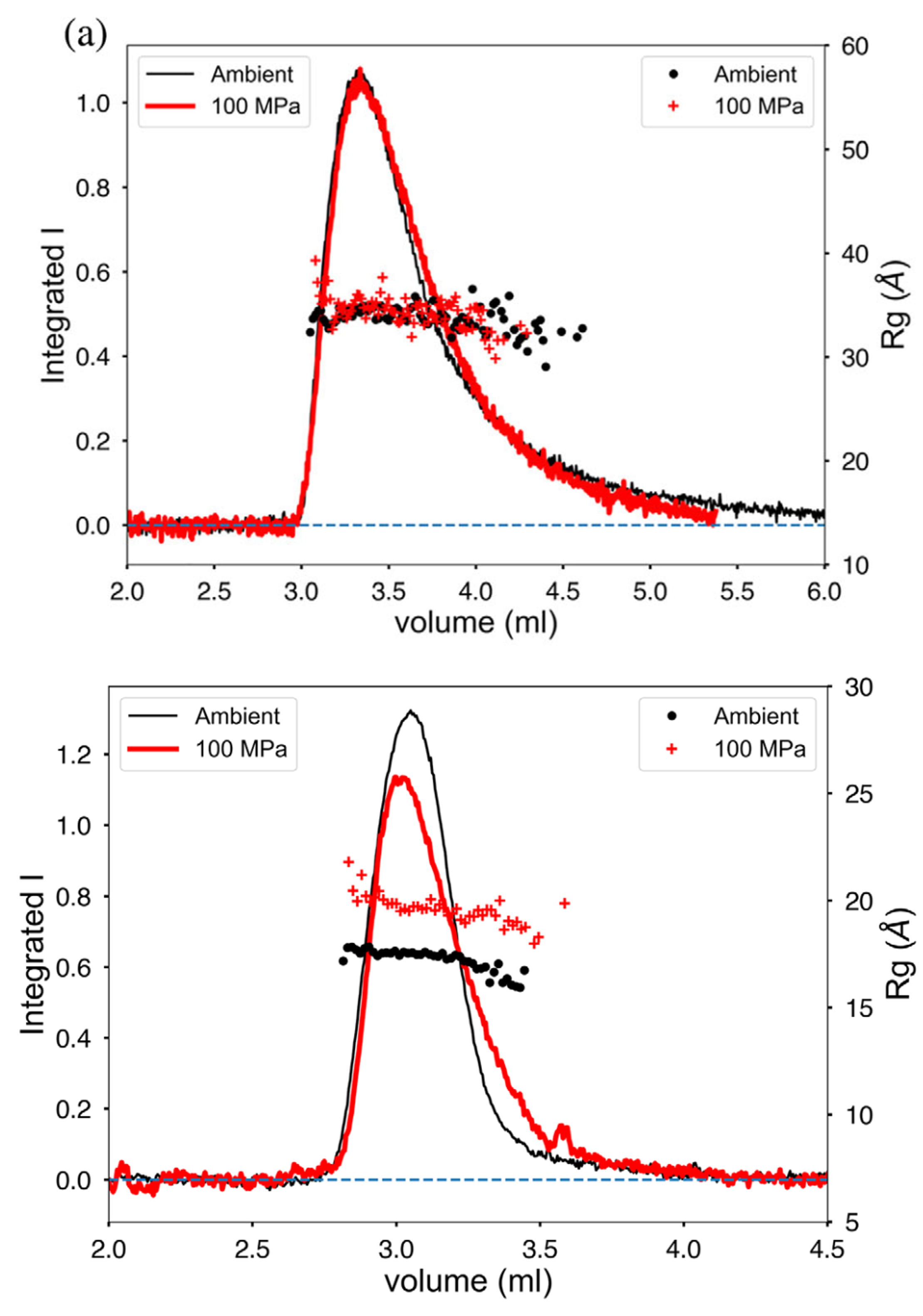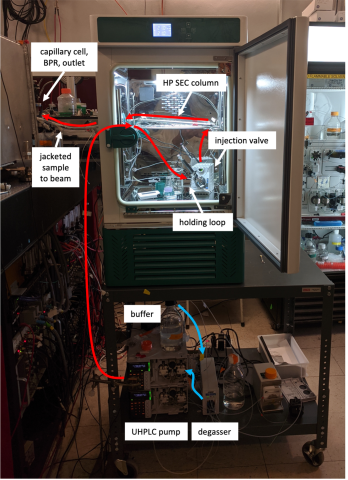What is the discovery?

Biological small-angle X-ray scattering (BioSAXS) is a key method for obtaining structural information from biomolecules in solution. The
best methodology for performing BioSAXS typically involves coupling the measurement to in-line methods to separate a mixture into components based on molecular size. This is called “chromatography”. Due to its ability to reduce radiation damage, remove aggregates, and separate monodisperse components from complex mixtures, size-exclusion chromatography-coupled SAXS (SEC-SAXS) is now the dominant form of BioSAXS at synchrotron beamlines, however it has never been possible to perform SEC-SAXS under elevated pressure. Now, a new paper appearing in the journal “Protein Science” and authored by CHEXS-supported graduate student Robert Miller demonstrates for the first time that reproducible chromatographic separations coupled directly to high-pressure BioSAXS can be achieved at pressures up to at least 100 MPa. Pressure-induced changes in folding and oligomeric state can be observed. This new system functions over a range of temperatures (0C–50C) relevant for understanding biomolecular rules of life in deep ocean and subsurface environments.
Why is it important?
Understanding the rules of “deep life” requires precision studies of complicated biological solutions under extreme conditions. This new paper reports a unique thermodynamic tool for biophysical characterizations of biomolecule mixtures. In his dissertation work, R. Miller is studying the role of pressures on protein allosteric communication using high pressure chromatography + SAXS. To better understand biological mechanisms of adaptation to extreme conditions, the pressure-response of ATCase enzymes in extremophile organisms is also being explored. These questions could not be addressed without the technical breakthrough of the new HP SEC-SAXS system.
Why did this research need CHEXS?
The HPBio beamline at CHEXS is the only synchrotron beamline dedicated to X-ray measurements of proteins under pressure, to better understand the biology of life at depth and under extreme conditions. The mission of HPBio involves developing first-of-their-kind experimental tools to tackle problems that could not be answered otherwise. The new HP SEC-SAXS system is a key example of one of these enabling technologies. It is not available anywhere else in the world.
How was the work funded?
Center for High Energy X-ray Sciences (CHEXS), NSF (DMR-1829070)
MacCHESS, NIGMS, NIH 1-P30-GM124166-01A1 (+NYSTAR)
DOE BES DE-AC02-06CH11357
Grant 9 NIGMS, NIH, P41 GM-103622
NIGMS Grant GM124847
Reference:
Inline SAXS‐coupled chromatography under extreme hydrostatic pressure Robert C Miller, Cody Cummings, Qingqiu Huang, Nozomi Ando, and Richard E Gillilan
Protein Science. 2022; 31( 12):e4489. https://doi.org/10.1002/pro.448
